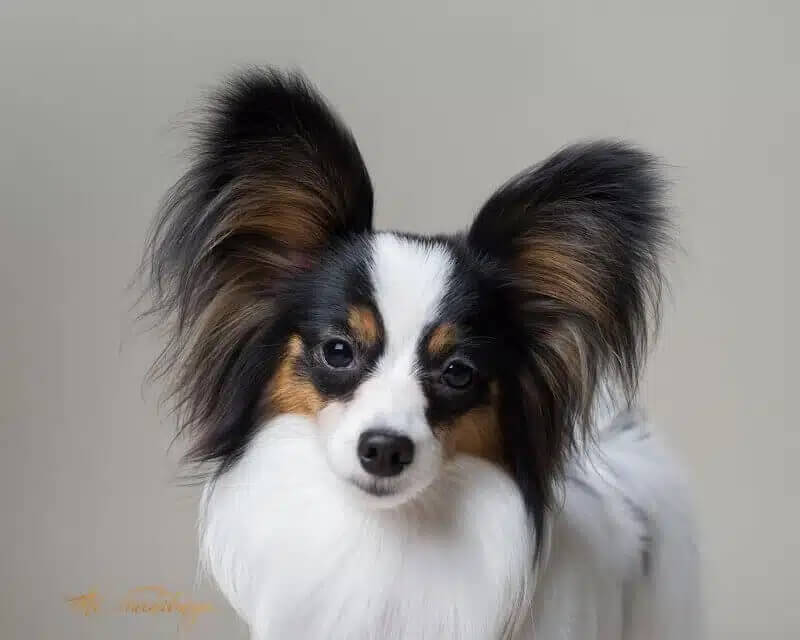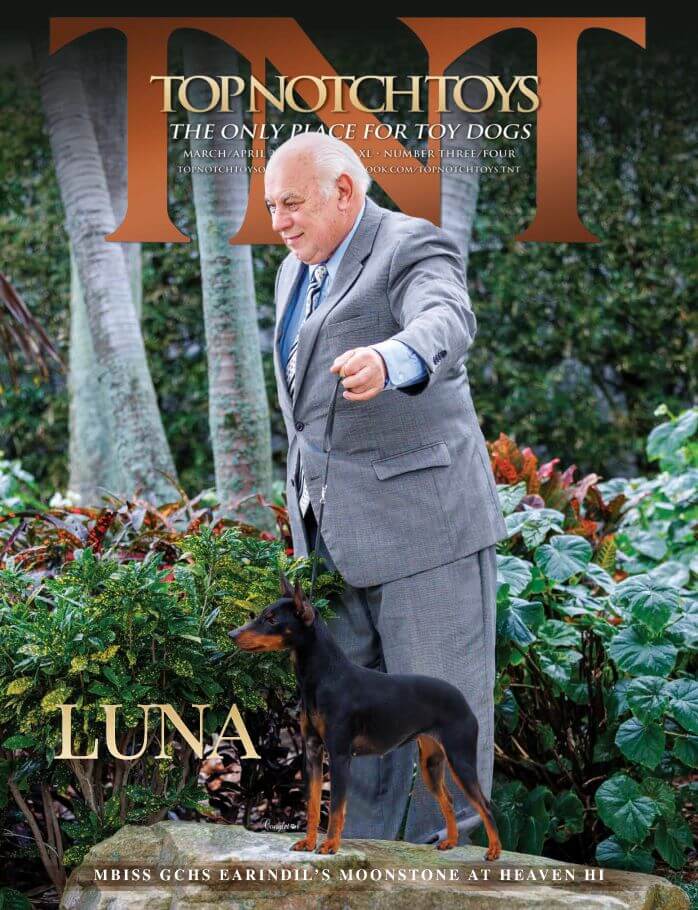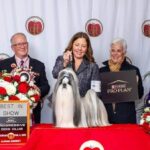Judging the Papillon
Fine-boned, dainty, elegant, happy, alert, and friendly. These key words from the breed standard should be in the forefront as you walk into your ring to judge Papillons. These words, along with a good understanding of the fine points of the breed, will result in recognizing proper breed type—which is most important when judging this wonderful breed.
First Look
Several points can be evaluated on your first look at the dogs in a class. Step well away from the class to check for proper proportion, size, and outline. The height standard is wide at 8-11 inches at the withers, and disqualified at 12 inches. All Papillons within the size range are to be judged equally. An 8-inch dog and an 11-inch dog should both be fine-boned in substance. Should you have any question on any exhibit being over 12 inches (think about the size of a ruler at the withers), please call for the wicket.
The proportion should be slightly longer than tall. Please remember that “slightly” means to a small degree, not considerably. There is nothing dainty or elegant about a long and low or cobby Papillon. The topline is level, with a neck of medium length. You do not want to see a stuffy look on a Papillon. The tail is set high and should be well-arched over the back. The best description is that of a “teacup tail.” The outline of a Papillon is lost with a flat tail or a flag tail. The neck, tail, and topline all come together to complete the unmistakable, elegant outline of the Papillon.
Take a Closer Look
After a look from afar, a check down the line will help you start your evaluation on ear set, expression, and temperament. You should see an alert expression, with ears at 45 degrees on a Papillon and ears completely down on a Phalene. They are usually always on alert, with a spark in their eye. The large, round, well-fringed ears are the hallmark of the breed and should be evaluated carefully both on the ground and on the table. They should never be pointed, high-set or small, which are faults. You should never think Chihuahua or Pomeranian—or rabbit—when looking at a Papillon!
Papillons should never shy away from a judge or have their tail down. You will find them to be a bit naughty and extremely happy instead of being reserved. They are not statues and should not be penalized for being a bit overzealous. Papillons should be able to stand on their own and be free-baited. Hand-stacking a Papillon on the ground gives the appearance of hiding a structural or temperament fault. Make it a “save the handlers’ knees” ring for Papillons! Papillons are companions, and temperament is extremely important.
Take the Class Around
Now it’s time to move the class! The standard calls for “shoulders well developed and laid back” and the rear is to be “well developed and well angulated.” The standard goes on to state that the gait should be “free, quick, easy, graceful” so as to further emphasize no restriction in movement. With proper construction, they should have balanced, effortless movement with reach and drive. The topline should remain level, with the tail over the back. A Papillon with fluid movement, with its unmistakable outline, is breathtaking!
On the Table
Please approach a Papillon on the table as you would any other dog—with a straightforward approach. Don’t try to slowly sneak up on them or baby talk them. This big dog in a small package is very intelligent and will wonder what you are up to. Never try to bait them yourself while they are on the table to check ear-set! You will end up catching them, as they will think you have bait or want to play. Ear-set must be evaluated on the ground.
Fine Points on Exam
There are important points to the exam on the table. However, always exam on the table, but judge them on the ground. Look for a small head with a 1/3 muzzle to 2/3 backskull. You should not see the look of a heavy or coarse headpiece. The standard calls for a fine and tapering muzzle. Even though those little square muzzles look “cute,” they are not correct. Look for dark, round eyes and a black nose with black pigment on all colors.
Coat color has no bearing on pigment or eye color. All Papillons with color patches, from the lightest red to the darkest black, must have black pigment and dark eyes. You don’t want to see light eyes that look like headlights, or a self-pigmented Papillon.
The standard is clear that a scissors bite is required. Pointed or small ears can be hidden by grooming or fringe, so check for a correct large, round, well-fringed ear on the table. A Phalene ear should never be lifted to erect, to check the set. Go down the front legs to check for fine bone, and look for hare feet. Also, check for correct proportion of slightly longer than tall, as the frill on the chest and abundant culottes could make them look longer than they are. If you are questioning the length of leg, simply push the belly coat back to properly see the length of leg in proportion to length of body. Look for a medium length of neck, level topline, and high tail-set.
While on the table, the coat texture will need to be examined. The coat should be fine, silky, and straight. Too often we see Papillons with cottony or fluffy coats. More coat does not mean better coat when it is incorrect. Papillons are parti-colored and the absence or presence of color is not important.
Ticking is allowed, as they originated from the Continental Toy Spaniel. Eyes and ears must be covered in color. Blaze and noseband are preferred, with symmetry of facial markings desired but not required.
Enjoy & Smile
Above all else, our hope is that you enjoy judging the Papillon dog breed. They are delightful butterfly dogs and should make you smile as you share the ring with them.
Papillon Dog Breed Magazine
Top Notch Toys is the only publication to offer dedicated Digital Breed Magazines for ALL recognized AKC Toy Group Breeds.
Read and learn more about the alert Papillon dog breed with articles and information in our Papillon Dog Breed Magazine.
Error embedding FlippingBook shortcode, please check the flipbook url. (https://digital.topnotchtoys.com/view/387968979/)










